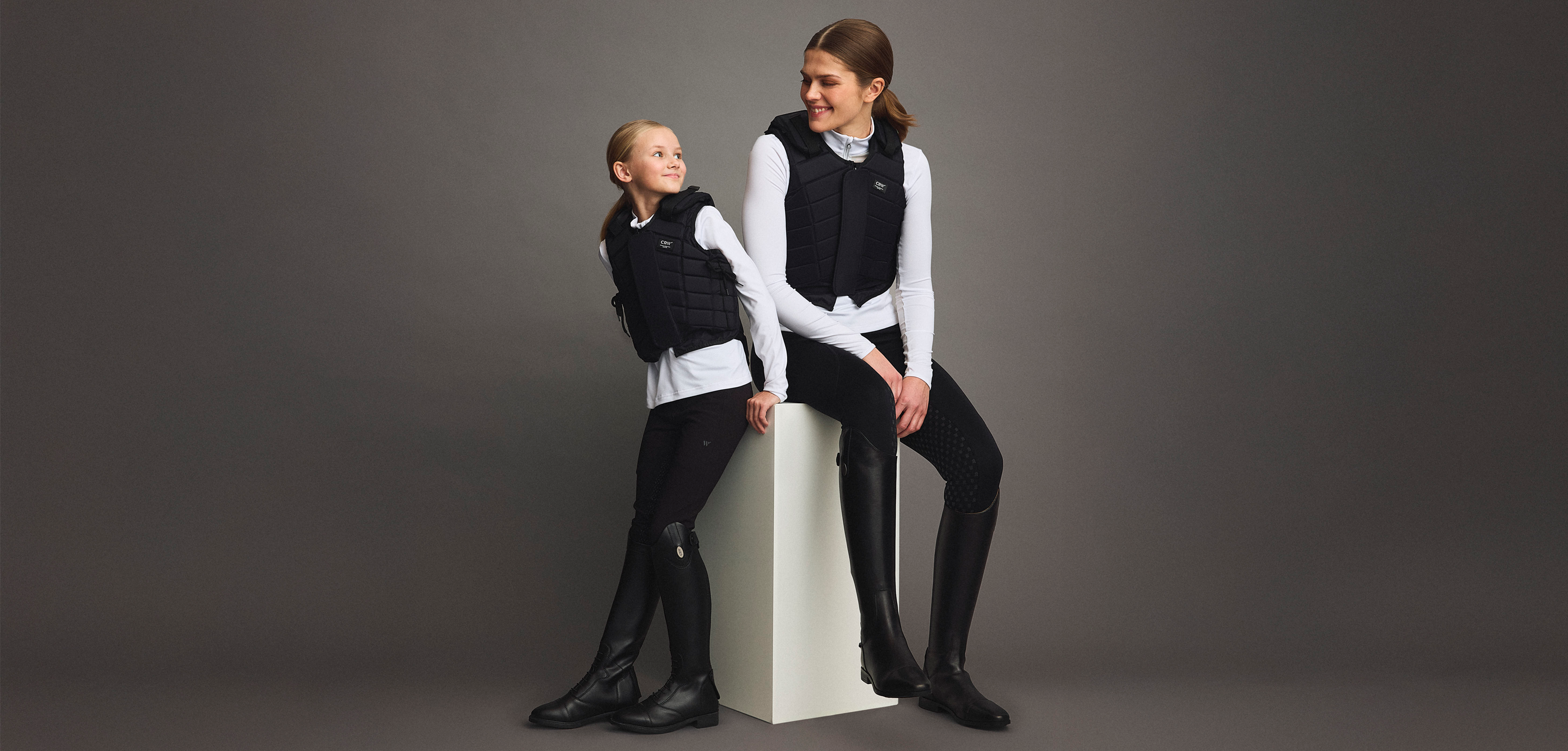Check the fit
- Ensure the correct length: When trying on the vest, there should be about 2.5 cm between the bottom of the safety vest and your first rib. This distance is important for protecting the ribs without restricting your mobility.
- Sit in the saddle: When fitting your safety vest, it is also important to try it on while sitting in the saddle. This helps you assess how it fits and moves with your body while riding. When sitting in the saddle, there should be about the width of a hand between the bottom of the vest and the start of the saddle. The vest should also end at the beginning of the neck, without rising up to the hairline.
- Mobility: The vest should fit snugly around the armpit and close to the shoulder without restricting your movement. When you extend your arms, the vest should not ride up. Check this by sitting in the saddle with your feet in the stirrups and make sure the vest does not affect your mobility when you lean forward or backward.
Avoid common mistakes
Don’t buy a vest to grow into: A poorly fitting vest offers less protection. It's important to choose a vest that fits well from the start, rather than planning to grow into it.
Regulations: As a rider, or if you are a guardian for a young rider, it is your responsibility to know the regulations for safety vests in your discipline and at your riding school. Generally, you are required to wear a safety vest until you turn 18. It is also important that the vest is approved with a CE marking according to EN13158/Beta Level 3.
Back protectors - What you need to know
Back protectors are an alternative to safety vests, but they come with certain limitations and regulations you should be aware of before deciding to purchase one. Back protectors are tested according to motorcycle equipment standards, not for equestrian sports. This does not guarantee the same level of protection as a safety vest specifically designed for equestrian use.
Approval and usage
- Not approved for juniors: In Sweden, back protectors are not approved for junior riders in competitions.
- Protection and limitations: A back protector can never fully replace a safety vest because it does not provide the same comprehensive protection. It is best suited for experienced riders over 18 years old who want lighter protection but still desire some safety.
Recommendation
We recommend primarily choosing a safety vest with a CE marking according to EN13158/Beta Level 3, which has been specifically tested for equestrian sports.
Airbag vests - When and how to use them
Airbag vests are a relatively new innovation in equestrian sports, offering extra protection in the event of a fall. The vest is attached to the saddle with a cord, and when you leave the saddle, the cord detaches and triggers a gas canister. When the gas canister is activated, the vest quickly inflates, creating a protective cushion around the torso, protecting the back, chest, and neck.
Function and use
- How it works: The airbag vest inflates when you leave the saddle and specifically protects in case of a fall. However, it does not protect when handling the horse on the ground, where a traditional safety vest provides broader protection.
- Who can use an airbag vest? Airbag vests are not approved as safety vests for riders under 18 years old. They are best suited for adult riders who seek extra protection but prefer a lighter and more flexible option.
Combination with a safety vest
- Requirements in some disciplines: In disciplines such as eventing, the airbag vest must be worn over a CE-marked safety vest. It is therefore important to try on the airbag vest with your safety vest to ensure they work well together.
- Choose the right model: Not all airbag vests are compatible with safety vests. For example, the Point 2 Air is suitable to use with a safety vest, while the Free Jump vest is not.
Additional information
- Expansion space: Make sure the airbag vest is neither too tight nor too loose. There must be enough space for the vest to expand properly without compressing you.
- Cold sensitivity: Note that airbag vests should not be used in temperatures below 0°C, as this can affect their function.


